After politics, the garden: a beauty in Cairns
Not all tropical gardens are full of palms and brightly coloured plants. Take this beautiful native garden in Cairns.
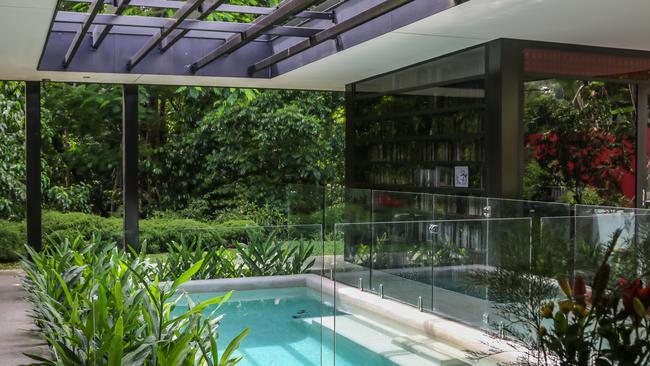
Not all tropical gardens are full of palms and brightly coloured plants. For their garden in Cairns, former Queensland senator Jan McLucas and her partner Bradley Smith much preferred the subtle shades of green offered by the native plants of far north Queensland. They designed and built the garden together over several years following completion of their new house in 2012.
Designed by architect Charles Wright, the house is a carbon-neutral, modernist pavilion that won several awards for design and sustainability in the 2013 National Architecture Awards. It’s set deep in the block, separated from the street by a belt of rainforest. At the rear there’s an ephemeral creek and a stand of established trees, many with beautiful buttressed roots. “The potential was obvious when we bought the block,” says McLucas. The main living and dining areas have no external walls; functional pods enclose bedrooms, bathrooms, a lounge/music room and office.
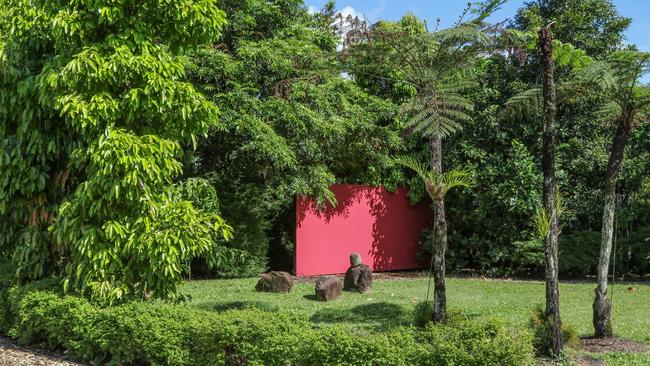
The garden’s design responds to the strong geometry of the house. “Our approach was to use gentle curves to delineate between the lawns, paths and beds,” says Smith. A gravel entry path winds through the dense rainforest belt; two red screens help conceal any glimpse of what lies ahead until the path opens up to a void lawn, dramatically revealing the house.
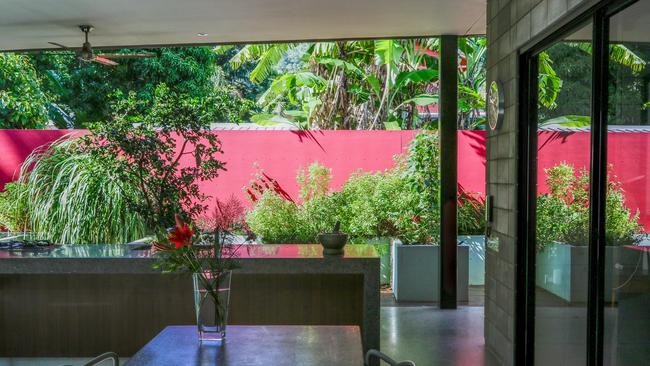
Alongside the open kitchen is a series of raised planter boxes for herbs, vegetables and fruit trees. “In a few paces I can grab what I need when cooking,” says Smith. Here and in the back garden they grow pepper, cardamom, turmeric, galangal, ginger and pandan, as well as the more usual produce. Capitalising on the merged indoors and outdoors, they positioned fragrant plants such as white ginger lily (Hedychium coronarium) around the central swimming pool, and native scented daphne (Phaleria clerodendron) to waft perfume into the home.
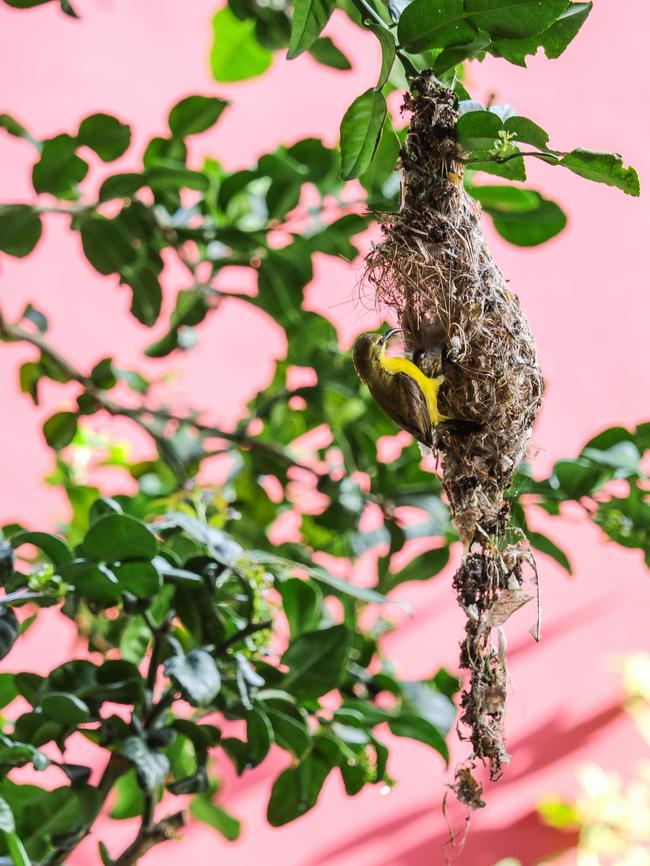
The only palms you’ll see are Licuala ramsayi, the north Queensland fan palm, with its bold, circular leaves. Another favourite plant is the Daintree or black tree fern, Cyathea rebeccae. “I’ve long been fascinated with growing local native plants,” says McLucas, who propagated many of their plants from locally collected seed. Other plants came from nearby native nursery Yuruga. “By planting these we’ve been able to eradicate Indian myna birds from the property, and we have many native birds and animals – including Cairns birdwing and Ulysses butterflies – that call our place home.” They’ve even had an olive-backed sunbird build its distinctive hanging nest from the branches of a makrut lime – almost in their kitchen.
Both of them love the native species for their texture, structure and palette of greens. For colour, they added several screens painted firecracker red. “That backdrop provides a wonderful contrast for the various greens and shapes of leaves,” says Smith. “The garden is a significant part of our lives,” adds McLucas, “through its produce, the enjoyment of animal life and the constant delight in the daily nuances of light, shade and texture.”
Q&A
My dragon fruit has grown well but its one fruit didn’t mature and fell off. What’s wrong? Will it keep fruiting? Liz Gordon, Brisbane
If flowers aren’t successfully pollinated, fruits will not develop. Some varieties need cross-pollinating from another type. Some are self-pollinating but need animals such as ants, moths, bats – or you – to transfer pollen from the male anthers to the female stigma. This is done at night when the flowers open.
Our Gymea lily in a large pot has produced a flower spike that is now taller than our two-storey house! Can we expect a flower at some stage and how should we deal with the plant and flower spike? Patrice Scales, Melbourne
The spectacular flower spikes are mostly around 4m but can reach 10m. The bud at the top usually opens in late spring to a 30cm-wide cluster of crimson flowers. Gymea lilies prefer deep soil for their contractile roots, so pots tend to limit their full potential, but a 50cm pot is enough for them to reach flowering size. After flowering you can cut off the flower stem at its base, or leave it to produce seeds.
Our worm farm population has grown wonderfully but our food scraps can’t keep up with their enormous appetite. Can I release some to the garden? Noriko, Perth
You can, but in Perth sand they’ll need lots of added organic matter and moisture to survive. In a shady spot, set up a base for them, like a lidded bucket with holes buried in the soil, where you add food and bedding materials. As they are surface worms, not soil worms, mulching is vital.
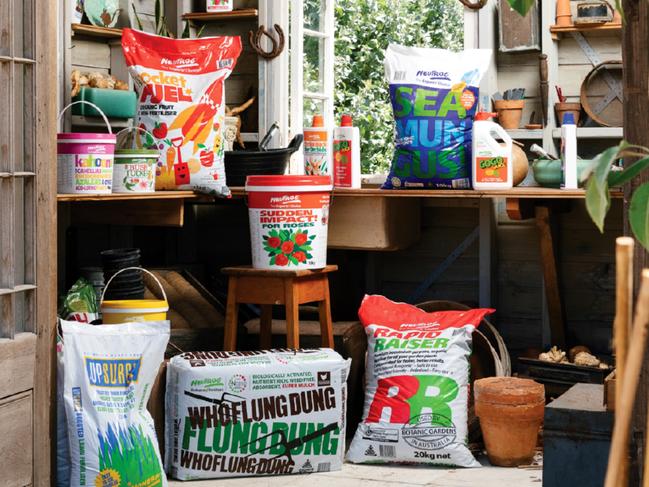
Send your questions to: helenyoungtwig@gmail.com or Helen Young, PO Box 3098, Willoughby North, NSW 2068. Website: helenyoung.com.au. The best question for June wins $150 worth of products from Neutrog to nourish your garden, including Seamungus, GOGO Juice and Whoflungdung




To join the conversation, please log in. Don't have an account? Register
Join the conversation, you are commenting as Logout